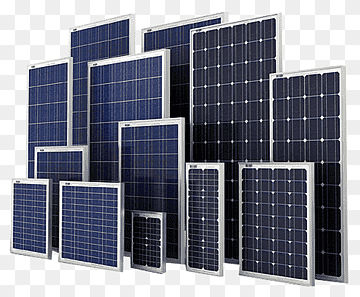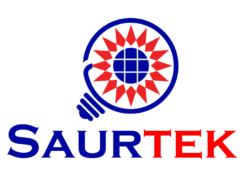Types of Solar Panels & its Efficiency
September 4, 2024
Solar panels come in various types, each with different efficiencies and characteristics. Here are the most common types:
1. Monocrystalline Solar Panels
- Description: Made from a single, continuous crystal structure. The cells appear black or dark in color due to the high purity of silicon used.
- Efficiency: Typically ranges from 17% to 22%. Monocrystalline panels are known for their high efficiency and space efficiency, making them ideal for installations where space is limited.
- Advantages:
- High efficiency and performance in low-light conditions.
- Long lifespan (25+ years).
- Aesthetically pleasing due to their uniform color.
- Disadvantages:
- More expensive than other types of panels.
- Efficiency slightly decreases at high temperatures.
2. Polycrystalline Solar Panels
- Description: Made from silicon crystals that are melted together. The cells have a blueish hue due to the multiple silicon crystals.
- Efficiency: Typically ranges from 15% to 18%. Polycrystalline panels are less efficient than monocrystalline but offer a good balance between cost and performance.
- Advantages:
- Less expensive to produce than monocrystalline panels.
- Durable and long-lasting.
- Disadvantages:
- Lower efficiency and space efficiency compared to monocrystalline panels.
- Slightly lower performance in high-temperature environments.
3. Thin-Film Solar Panels
- Description: Made by depositing one or more layers of photovoltaic material (such as cadmium telluride, amorphous silicon, or copper indium gallium selenide) onto a substrate like glass, plastic, or metal.
- Efficiency: Typically ranges from 10% to 12%. Thin-film panels are generally less efficient than crystalline silicon panels but have other advantages.
- Advantages:
- Flexible and lightweight, making them suitable for a variety of applications, including portable solar chargers and building-integrated photovoltaics (BIPV).
- Better performance in low-light conditions and high temperatures.
- Lower production costs.
- Disadvantages:
- Lower efficiency and require more space for the same power output as crystalline panels.
- Shorter lifespan compared to crystalline panels.
4. Passivated Emitter and Rear Cell (PERC) Panels
- Description: An advancement of monocrystalline technology. PERC panels have an additional layer on the back of the cell that reflects light back into the cell, increasing its efficiency.
- Efficiency: Typically ranges from 18% to 23%. PERC panels are one of the most efficient on the market.
- Advantages:
- Higher efficiency than standard monocrystalline panels.
- Improved performance in low-light and high-temperature conditions.
- Disadvantages:
- Higher cost compared to standard monocrystalline panels.
- Slightly more complex manufacturing process.
5. Bifacial Solar Panels
- Description: Bifacial panels can capture sunlight from both sides, allowing them to generate more electricity. These panels can be monocrystalline or polycrystalline.
- Efficiency: The efficiency can exceed 22% in optimal conditions. The exact efficiency depends on the installation setup, as the reflective surface beneath the panels plays a significant role.
- Advantages:
- Potentially higher energy output due to dual-sided light absorption.
- Durable and often come with a longer warranty.
- Disadvantages:
- More expensive and require careful installation to maximize efficiency.
- Limited application where reflective surfaces are available.
6. Concentrated Photovoltaics (CPV)
- Description: Uses lenses or curved mirrors to focus sunlight onto small but highly efficient solar cells.
- Efficiency: Can exceed 40%, but this depends on the concentration ratio and the tracking system used.
- Advantages:
- Extremely high efficiency.
- Ideal for areas with high direct sunlight.
- Disadvantages:
- Requires precise tracking systems to maintain optimal light focus.
- High cost and complexity.
- Not suitable for diffuse light conditions or cloudy regions.
Summary of Efficiencies:
- Monocrystalline: 17% – 22%
- Polycrystalline: 15% – 18%
- Thin-Film: 10% – 12%
- PERC: 18% – 23%
- Bifacial: 22%+ (under optimal conditions)
- CPV: 40%+ (under optimal conditions)
Each type has its own advantages and disadvantages, so the best choice depends on specific needs, such as space constraints, budget, and environmental conditions.
